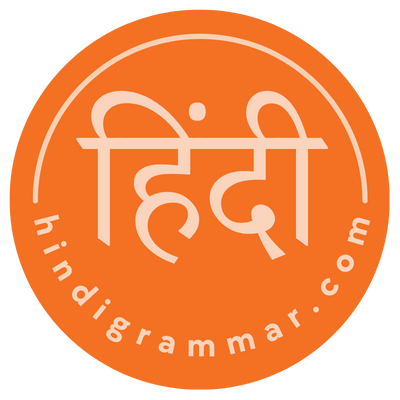 Introduction
Introduction
The Hindi language, with its rich cultural heritage, is written in the Devanagari script. The script consists of two main components: consonants, known as “Hindi Vyanjans,” and vowels, known as “Hindi Swars.” These consonants form the backbone of the Hindi language, as they shape the sound and structure of words. Understanding the Hindi consonants is essential for anyone learning the language, as it lays the foundation for proper pronunciation, comprehension, and communication.
In this blog, we will embark on a journey to decode the mysteries of Hindi consonants in Bornomala, exploring their significance, pronunciation, and various nuances. Let’s dive into the world of Hindi consonants and learn how they contribute to the beauty and depth of the language.
What are Hindi Consonants?
Hindi consonants, or Vyanjans, are the building blocks of the Devanagari script. These characters are written in a linear fashion and represent the sounds made by the human vocal tract, excluding the vowels. In the Hindi Bornomala, there are a total of 33 consonants, each with its unique sound and shape. These consonants can be further categorized based on their pronunciation and attributes.
Understanding Hindi Consonants and Their Pronunciation
- Velar Consonants (क – ङ)
The velar consonants are produced when the back of the tongue touches the soft part of the roof of the mouth. These consonants include:
क (k) – pronounced as ‘k’ in “kite.” ख (kh) – pronounced as ‘kh’ in “khaki.” ग (g) – pronounced as ‘g’ in “go.” घ (gh) – pronounced as ‘gh’ in “ghost.” ङ (ṅ) – pronounced as ‘ng’ in “sing.”
- Palatal Consonants (च – ञ)
The palatal consonants are produced when the middle part of the tongue touches the hard part of the roof of the mouth. These consonants include:
च (c) – pronounced as ‘ch’ in “chocolate.” छ (chh) – pronounced as ‘chh’ in “catch.” ज (j) – pronounced as ‘j’ in “jump.” झ (jh) – pronounced as ‘jh’ in “jungle.” ञ (ñ) – pronounced as ‘ny’ in “canyon.”
- Retroflex Consonants (ट – ण)
The retroflex consonants are produced when the tip of the tongue touches the roof of the mouth near the upper gums. These consonants include:
ट (ṭ) – pronounced as ‘ṭ’ in “button.” ठ (ṭh) – pronounced as ‘ṭh’ in “bath.” ड (ḍ) – pronounced as ‘ḍ’ in “dust.” ढ (ḍh) – pronounced as ‘ḍh’ in “adhere.” ण (ṇ) – pronounced as ‘ṇ’ in “lunar.”
- Dental Consonants (त – न)
The dental consonants are produced when the tip of the tongue touches the back of the upper front teeth. These consonants include:
त (t) – pronounced as ‘t’ in “top.” थ (th) – pronounced as ‘th’ in “think.” द (d) – pronounced as ‘d’ in “dog.” ध (dh) – pronounced as ‘dh’ in “father.” न (n) – pronounced as ‘n’ in “net.”
- Labial Consonants (प – म)
The labial consonants are produced using the lips. These consonants include:
प (p) – pronounced as ‘p’ in “pot.” फ (ph) – pronounced as ‘ph’ in “phone.” ब (b) – pronounced as ‘b’ in “bat.” भ (bh) – pronounced as ‘bh’ in “behind.” म (m) – pronounced as ‘m’ in “man.”
- Semi-Vowels (य – व)
The semi-vowels act as a bridge between consonants and vowels and have a vowel-like quality. These consonants include:
य (y) – pronounced as ‘y’ in “yes.” र (r) – pronounced as ‘r’ in “run.” ल (l) – pronounced as ‘l’ in “love.” व (v) – pronounced as ‘v’ in “vest.”
- Sibilants (श – ह)
The sibilants are hissing sounds produced by forcing air through a narrow channel. These consonants include:
श (ś) – pronounced as ‘sh’ in “she.” ष (ṣ) – pronounced as ‘ṣ’ in “sash.” स (s) – pronounced as ‘s’ in “sun.” ह (h) – pronounced as ‘h’ in “hat.”
Role of Hindi Consonants in Bornomala
- Forming Words: Consonants play a crucial role in forming words in the Hindi language. Combining consonants with vowels (matras) creates meaningful and distinct words that convey various ideas and concepts.
- Building Sentences: Consonants are essential in constructing sentences, and their proper usage ensures that sentences are grammatically correct and meaningful.
- Preserving Phonetics: The unique sound of each consonant contributes to the phonetic beauty of the Hindi language. Accurate pronunciation of consonants ensures clarity and effective communication.
- Differentiating Words: Different consonants with similar pronunciations can result in entirely different words. Hence, the correct usage of consonants is vital in distinguishing between words and their meanings.
- Script Aesthetics: The Devanagari script is known for its aesthetic appeal, largely due to the beautifully crafted consonants. Properly written and arranged consonants enhance the visual aspect of the script.
Tips to Master Hindi Consonants
- Regular Practice: Practice writing and pronouncing each consonant regularly. Consistent practice will reinforce your understanding and familiarity with the characters.
- Use Phonetic Associations: Create phonetic associations for consonants to remember their pronunciation. Relate them to familiar words in your native language or English to build a mental connection.
- Listen and Repeat: Listen to native speakers and mimic their pronunciation of consonants to improve your accent and pronunciation.
- Use Flashcards: Create flashcards with consonants on one side and their pronunciation and meaning on the other. Regularly review these cards to strengthen your memory.
- Language Apps and Tutorials: Utilize language learning apps and online tutorials that focus on Hindi consonants. These resources can offer interactive lessons and exercises to enhance your learning experience.
Conclusion
Hindi consonants are the building blocks of the Devanagari script and the essence of the Hindi language. Understanding their pronunciation and significance is vital for anyone learning Hindi, as it lays the groundwork for effective communication and comprehension. By mastering Hindi consonants, learners unlock the potential to explore the vast world of Hindi literature, art, and culture. So, let us embrace the beauty of Hindi consonants and embark on a journey of linguistic discovery!
